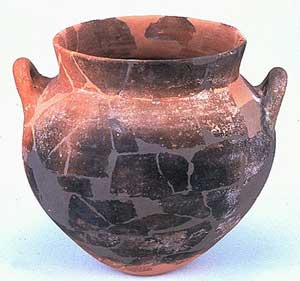The type of unbaked clay jar has the ability to cool the water inside. This type of jar is very common in Central Asian countries and has various names: in Spain, it is called “Alicaratxa,” while in Egypt, it is known as “Gâula” …
 |
|
(Photo: culture) |
The secret behind the cooling effect of these jars is quite simple: the water contained in the jar seeps through the clay walls and gradually evaporates; during this evaporation process, it absorbs some heat from the jar and the water inside.
However, the cooling effect is not very significant. It depends on many conditions. The hotter the air, the faster and more the water evaporates from the jar, making the water inside cooler. The cooling effect also depends on the humidity of the surrounding air: if the air is very humid, the evaporation process occurs slowly, and the water does not cool down much. Conversely, in dry air, evaporation happens quickly, causing the water to cool noticeably. The stronger the wind, the more intense the evaporation, thereby enhancing the cooling effect (the effect of wind can also be observed when wearing a wet shirt on hot days; with wind, it feels cooler and more comfortable).
The temperature reduction in these cooling jars typically does not exceed 5 degrees Celsius. On hot days in Central Asia, when the thermometer reads 33 degrees Celsius, the water inside the jar is usually around 28 degrees Celsius. Thus, the cooling effect of this type of jar is not particularly advantageous. However, these jars are excellent for keeping water cool, which is their primary use.
We can estimate how cold the water in the “alicaratxa” jar can get. For example, if we have a jar that holds 5 liters of water and assume that 1/10 liter has evaporated. On hot days at 33 degrees Celsius, to evaporate 1 liter (1 kg) of water requires about 580 calories; thus, if 1/10 kg has evaporated, it would require 58 calories. If all of these 58 calories come from the water in the jar, the temperature of the water would drop by 58/5, which is approximately 12 degrees. However, most of the heat needed for evaporation is drawn from the jar’s walls; on the other hand, the water in the jar is simultaneously cooled while being heated by the hot air in contact with the jar’s walls. Therefore, the water in the jar only cools by about half of the calculated amount.
It is difficult to determine where the jar cools more effectively—whether in sunlight or in the shade. In sunlight, the water evaporates faster, but at the same time, more heat enters the jar. However, the most assured method is to place the jar in the shade with some wind.


















































